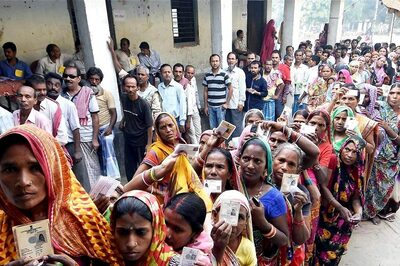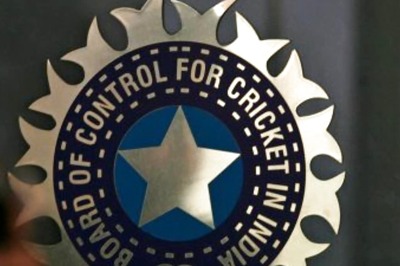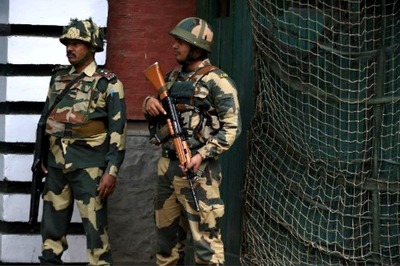
views
Earlier this month, the National Commission for Protection of Child Rights (NCPCR) issued draft guidelines that debated whether the preliminary assessment of minors in certain cases could be tried under law as adults under section 15 of the Juvenile Justice Act. This has met criticism from many quarters including the non-governmental organisations that work for child rights. They believe it is an attack on the Juvenile Justice Act and works against the very principle it was supposed to hold on to.
It is very discernible that the recent amendment of inclusion of seven serious offences as non-cognisable will affect families of children from the vulnerable, minority and economically weaker sections (EWS) because of the judicial and administrative difficulties, especially when tried as adults in the complex judicial system. This amendment also restricts the power of police in certain offences like the sale and procurement of children for any purpose “by a person having actual charge of the child, including employees of a hospital or nursing home or maternity home”, being treated as a ‘non-cognisable’ offence. This means that the police cannot investigate that offence or arrest the accused without orders from the District Magistrate.
What is new in the amendment?
The Juvenile Justice (Care and Protection) Act, 2015 dictated that a juvenile aged between 16 and 18 can be tried as an adult if the person has committed a heinous crime. The offender will be sent to the children’s court and the maximum punishment for heinous crimes can surpass a sentence of three years. However, the death penalty or life imprisonment cannot be awarded to a juvenile. Section 15 of the Juvenile Justice Act, 2015 suggests conducting a preliminary assessment on juveniles to be tried as adults. The Centre amended and passed the Juvenile Justice (Care and Protection of Children) Amendment Act in 2021.
In the 2021 amendment, offences against children that have a punishment of more than three years and less than seven years (serious offences) were made non-cognisable, which means no FIR (first information report) can be registered without special permission of a judicial magistrate, thereby the onus of which is on the aggrieved. Police can only record general diary entries, not FIR. And no FIR means no automatic investigation.
This amendment led to making seven serious offences non-cognisable i.e., Section 75: Inflicting cruelty on children by children’s home staff; Section 76: Employing children for begging; Section 77: Giving intoxicating liquor or drug or substance to children; Section 78: Using children for drug peddling or smuggling; Section 79: Exploitation of child employee; Section 81: Sale & procurement of children (except for trafficking/prostitution purposes which continues to be a cognisable offence under Indian Penal Code); and Section 83: Use of children by militant groups for legal or illegal purposes.
The act continues to mandate that Children In Conflict With Law (CICL) be sent to observation homes (temporary reception centres during the pendency of inquiry) or special homes (meant for rehabilitation where reformative services like education, skill development, counselling, behaviour modification therapy and psychiatric support are provided) or a place of safety (for children aged between 16 and 18 who are in conflict with the law and accused of or convicted of committing a heinous offence.) They are finally sent to an after-care home to assist a young offender on completion of 18 years of age with financial support and initiate re-integration into society.
CICL over the years
The United Nations General Assembly (UNGA) adopted a Convention on the Rights of Children in 1989 to provide special treatment to juveniles. This guided the Government of India to repeal the Juvenile Justice Act of 1986 and enact The Juvenile Justice (Care and Protection) Act, 2000. The act provided a framework for the protection, treatment, and rehabilitation of children in the purview of the juvenile justice system. The Act was further amended in 2015 and subsequently with the Juvenile Justice (Care and Protection of Children) Amendment Act 2021, which is currently under debate.
But has the law worked over the years? Crimes committed by juveniles in the last three years, according to the Crime in India report by the National Crime Records Bureau, are 32269 (2019), 29768 (2020), and 31170 (2021). This accounts for 7 percent of crime incidence by juveniles per one lakh of the population of children.
Subsequently, crime committed by juveniles in 19 metropolitan cities in India has reduced over the last three years with 6885 (2019), 5974 (2020), and 5828 (2021).
As per the 2021 Crime in India report, about 85 percent of the apprehended juveniles lived with their parents, which clearly reflects failure within the family environment to nurture future generations. Moreover, 85 percent of juvenile cases were IPC-related crimes. Almost 40 percent of the offences were related to affecting the human body, which included hurt and grievous hurt, rape, and assault on women to outrage their modesty among many others. Apart from this, property-related offences amounted to about 32 percent of all crimes involving juveniles. Theft alone constituted 64 percent of these offences. It is to be noted that 80 percent of juveniles have education up to matriculation.
Sanctity perspective towards juvenile justice
The inclusivity of various vocational and reformative provisions in the Juvenile Justice Act does not necessitate the implementation of these amenities for the holistic rehabilitation of juveniles. The preliminary assessment report under Section 15 of the Act analyses the gravity of the offence and inquires about both the mental and physical capacity of the child to commit such an offence.
The gravity of the offence can be analysed from the legal provision, the physical capacity could be deciphered from various medical tests and the mental capacity can only be concluded through psychological testing. In India, where we have a dearth of mental health professionals (MHP) i.e., 0.3 MHP to one lakh population, it is important to involve the expertise of various professionals to maintain sanctity in juvenile justice.
Future challenges in juvenile justice
The current juvenile system needs to focus meticulously on the reformation and rehabilitation of CICL, with dedicated measures to reintegrate them into society. It is pertinent to understand that 16-18 years is an extremely sensitive and critical age that requires greater protection. The Juvenile Justice Board should also be sensitive to not violate Articles 14 and 15(3) of the Constitution while concluding CICL (between 16-18 years) to be tried as an adult.
The Juvenile Board through the preliminary assessment report should be sensitive not to violate the basic principles as stated in Section 3 of the Act namely the Principle of Presumption of Innocence, Principle of Dignity and Worth, and Principle of Best Interest. It is critical to include experienced psychologists in the Juvenile Board to determine the mental capacity and maturity of the CICL. It is the need of the hour for the justice delivery system to consider restorative justice in dealing with juvenile justice.
The author is a prominent criminologist based out of India. He is working as Assistant Professor and Assistant Dean at Jindal Institute of Behavioural Sciences. Views expressed are personal.
Read all the Latest Opinions here




















Comments
0 comment